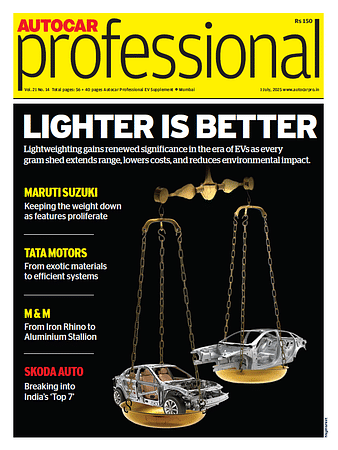F&S study: Legislation to compel carmakers in India to have airbags and ABS by 2014
F&S study: Legislation to compel carmakers in India to have airbags and ABS by 2014
Mumbai, March 14, 2013: A Frost & Sullivan research study ‘Indian Vehicle Technologies Evolution Roadmap’ finds that airbags and anti-lock braking system (ABS) are likely to become mandatory in Indian passenger vehicles by FY'14. Keyless entry, engine immobiliser and seatbelt warning are expected to have high penetration rates. However, vehicle manufacturers have to walk the fine line between reducing the vehicle's weight and offering new functionalities.
Social and legislative factors such as better urban infrastructure, and safety and emission norms play a vital role in the evolution of automotive technologies. India's large population and a low car penetration rate of approximately eight cars per 1,000 people translate into significant untapped potential for the automotive industry. Further, the rising middle class is moving away from motorcycles to entry-level cars, giving vehicle manufacturers opportunities to strategise and innovate.
Original equipment manufacturers (OEMs) tend to gravitate toward entry-level saloons under 4 metres long for the domestic market to avail duty benefits and meet emission norms. Using superior technologies such as variable valve timing (VVT) and double overhead camshaft (DOHC), automakers have been able to extract more horsepower and thereby, higher efficiency and torque, from a low-capacity engine. “OEMs are focusing their R&D initiatives on developing alternative fuel vehicles, which run on compressed natural gas/liquefied petroleum gas," said a Frost & Sullivan analyst. "Penetration levels for automatic transmission, currently at 4 percent, are expected to increase in the near future."
The 58.2 percent penetration rate for electric power steering in passenger vehicles is projected to grow by 20-22 percent by FY'17. Multilink suspension systems will continue to be used over the next five years, as these systems are economical. Vehicle manufacturers offer vehicle stability features only in the high-end variants of compact segment models.
However, by 2014, ABS and electronic brake distribution (EBD) are expected to become mandatory in all models at all trim levels. Tyre pressure monitoring systems and electronic stability programs (ESPs) are likely to witness 100 percent penetration by FY'16 in the utility vehicle segment. Comfort and conveyance features such as power windows, remote locking, fog lamp, and rear AC vents will witness more than 80 percent penetration over the next five years.
"In the infotainment technology segment, Bluetooth connectivity and USB port are expected to witness higher uptake," noted the analyst. "AUX In-Port and Bluetooth user interface are also generally offered in high-end vehicles due to the price factor, but with time, the penetration rate of AUX In-Port is anticipated to increase in the midsize car and hatchback segments."
RELATED ARTICLES
Ashok Leyland's Mix of Strategy and Sustainability Ashok Leyland Aligns Sustainability Goals With Business Operations
Ashok Leyland is embedding sustainability deep into its operational strategy, leveraging green finance, electrification,...
New Players Reshape India’s Electric CV Ecosystem The Evolution of India’s e-CV Landscape
Unlike in cars and two-wheelers, the electrification of commercial vehicles is in very early stages due to uncertainty o...
Auto Giants Explore Hybrid Strategy as EVs Hit Speed Bumps
Slower-than-expected EV adoption, tight CAFE norms and ever-present efficiency demands are giving hybrids a second wind ...





 By Autocar Pro News Desk
By Autocar Pro News Desk
 14 Mar 2013
14 Mar 2013
 2691 Views
2691 Views





 Shahkar Abidi
Shahkar Abidi




